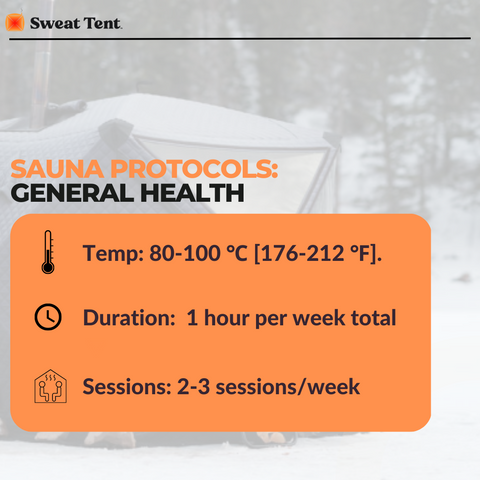The Finnish tradition of sauna bathing has been intuitively linked to health benefits for centuries. A pioneering study by the University of Eastern Finland and published in JAMA provides substantial evidence supporting this connection, particularly with cardiovascular health and mortality rates.
Methodology and Participant Profile
This study conducted a prospective cohort analysis of 2,315 middle-aged men from Eastern Finland. It meticulously recorded the frequency, duration, and temperature of their sauna sessions, correlating these factors with cardiovascular events and mortality over a median follow-up of 20.7 years.
Statistical Findings
Researchers discovered that:
- Men engaging in sauna sessions 2-3 times per week had a 22% lower risk of fatal cardiovascular disease.
- Sauna sessions of 15-20 minutes were associated with a 40% reduction in cardiovascular mortality.
- An inverse relationship was observed between the frequency of sauna use and all-cause mortality, with a notable 23% reduction for those attending the sauna 2-3 times weekly.
Physiological Responses to Sauna Bathing
[Summary] Sauna bathing triggers several physiological changes:
- An increase in heart rate comparable to moderate-intensity exercise.
- Enhanced circulation and sweating, leading to potential detoxification.
- Improved cardiovascular function, including blood pressure and left ventricular performance.
The physiological responses to sauna bathing are a fascinating aspect of the study, highlighting how the body reacts to the heat in ways that can promote health. When you enter a sauna, the intense heat begins to affect your body almost immediately.
Your skin temperature soars to about 104°F within minutes, and your body starts to sweat profusely. This sweating is a natural cooling process, which also helps to remove toxins from the body. As the heart works harder to pump blood to the surface of your skin, your heart rate increases, similar to what happens during moderate exercise, potentially providing cardiovascular benefits.
The study specifically found that the heart rate can increase up to 100 beats per minute during a moderate sauna session and up to 150 beats per minute during more intense sauna exposure. This elevated heart rate leads to an increase in cardiac output, which means the heart is pumping more blood throughout the body each minute. While the skin receives more blood flow, internal organs receive less — a redistribution that is a normal physiological response to heat exposure.
Beyond the immediate effects on heart rate and sweating, regular sauna use has been associated with long-term benefits, such as lower blood pressure and improved function of the left ventricle of the heart. These effects combined can contribute to the reduced risk of cardiovascular disease and all-cause mortality observed in the Finnish sauna study participants who used the sauna regularly.
Understanding these physiological responses helps to explain why sauna bathing could be more than just a relaxing experience but also a potentially life-extending one. The study by the University of Eastern Finland sheds light on these health benefits, providing a scientific foundation for a practice deeply ingrained in Finnish culture.
Potential Mechanisms
The potential mechanisms behind the health benefits of sauna use, as suggested by the Finnish study, revolve around several key physiological changes:
- Improved Cardiovascular Function: The heat from a sauna session causes blood vessels to dilate, leading to better blood flow. This can lower blood pressure and enhance heart function, which are crucial factors in reducing the risk of cardiovascular diseases.
- Stress Reduction: Sauna bathing is known for its relaxing effects, which can decrease the production of stress hormones in the body. Lower stress levels are associated with a reduced risk of hypertension and heart problems.
- Detoxification: Sweating can help remove toxins from the body. Although the extent of detoxification through sweating is still a matter of scientific debate, it may contribute to overall well-being.
- Heat Shock Proteins: Exposure to heat stress can increase the production of heat shock proteins, which play a role in cellular repair and the immune response.
- Endothelial Function: Regular sauna use may improve endothelial function—the functioning of the inner lining of blood vessels—which is important for cardiovascular health.
The study points out that further research is needed to fully understand these mechanisms and their direct impact on health outcomes. Consult with your doctor to understand how sauna use might impact your personal health.
Health Implications and Recommendations
The Finnish sauna study provides compelling evidence for the inclusion of sauna bathing as a complementary health practice, with recommendations for safe use and the potential for incorporating sauna sessions into regular health routines.
Discover the rejuvenating power of sauna therapy with Sweat Tent's portable sauna. Whether you're looking to enhance your cardiovascular health, reduce stress, or simply enjoy the warmth of a sauna in the comfort of your home, Sweat Tent has you covered. Take the first step towards a healthier lifestyle today and experience the myriad benefits that sauna bathing has to offer. Browse our site to find the perfect sauna for your wellness journey and start reaping the rewards of this age-old tradition with the modern convenience of Sweat Tent.
Sources:
https://jamanetwork.com/journals/jamainternalmedicine/fullarticle/2130724






